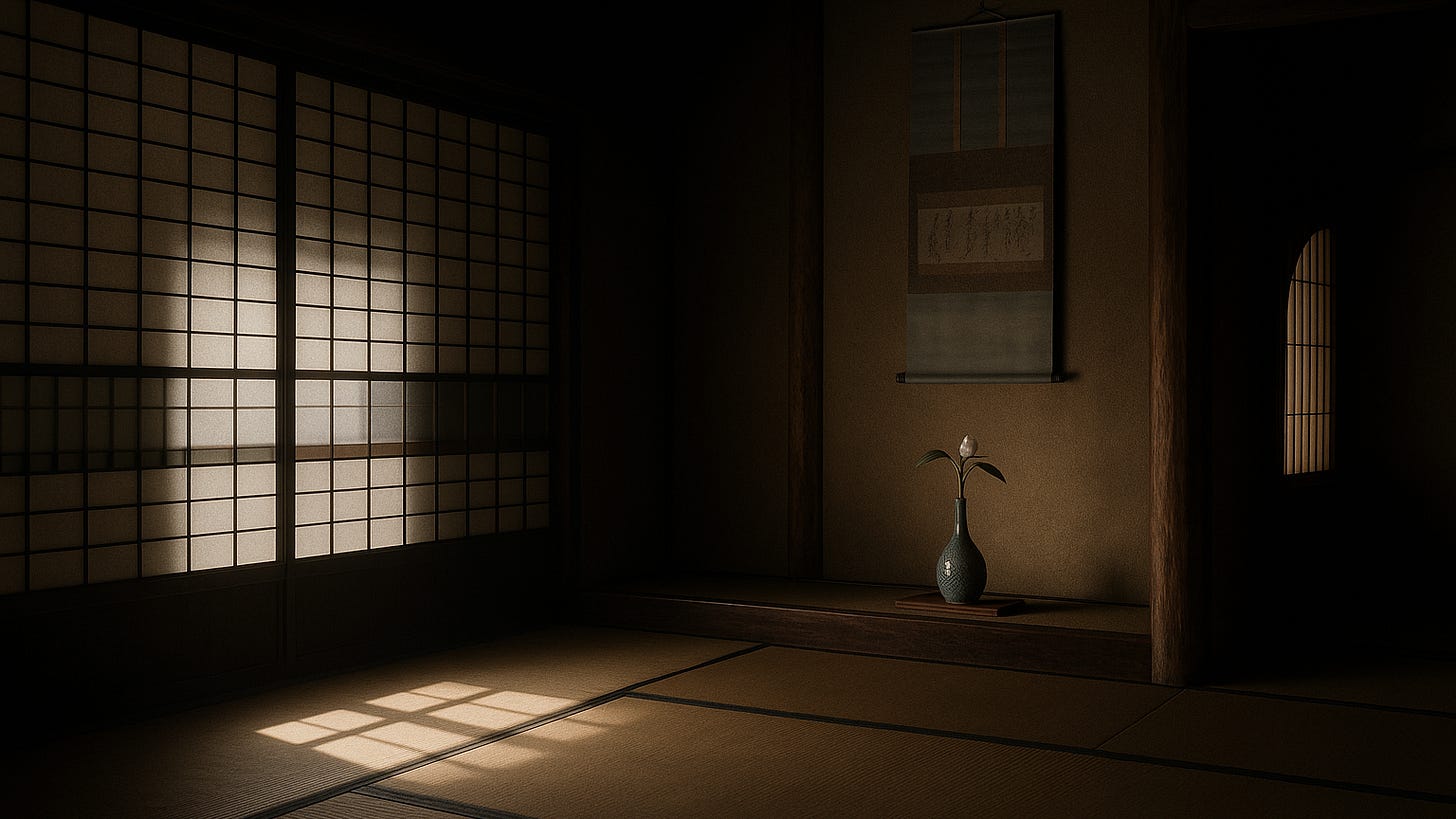Shadow Defines Japanese Beauty—Darkness as a Pure Divine Realm
A Japanese Sensibility That Finds Beauty in Imperfection
Japanese traditional culture possesses a unique sensibility that finds charm (“趣”, omomuki) in “shadows” (“陰影”, in’ei), rather than in bright, glittering beauty. Jun’ichiro Tanizaki famously wrote in his essay “In Praise of Shadows” (“陰翳礼讃”, 1933), “Beauty lies not in objects themselves, but in the subtle interplay of shadows and light created between them (美は物体にあるのではなく、物体と物体との作り出す陰翳のあや、明暗にある).” For instance, he pointed out how precious jewels illuminated at night sparkle precisely because they are surrounded by darkness; when exposed to the harsh daylight, their allure fades. Tanizaki argued that without shadow, true beauty cannot exist. “In Praise of Shadows” continues to be read today as a classic, but what exactly is the historical and cultural background that has cultivated this Japanese affinity for shadows?
The beauty of shadows that immediately comes to mind can be observed in the traditional lighting environments of Japanese houses, where numerous ingenious methods are employed to skillfully harness shadows. During the daytime, “shoji” (障子, paper sliding doors) diffuse sunlight softly, providing rooms with gentle illumination. At night, rooms are lit only by subtle sources such as “andon” (行灯, paper lanterns) or candle stands (“燭台”, shokudai), naturally creating shadows in corners. In traditional Japanese rooms (washitsu) refined through centuries under these conditions, people once hesitated even to hang bright ceiling lights. Today’s Japanese dislike shadows and are obsessed with making everything brightly lit, a phenomenon resulting from post-war mass production combined with the widespread adoption of Western-style houses. This shift represents more than just a change in architecture—it fundamentally altered the Japanese psyche and will likely become a significant point of concern in the future.
Indeed, traditional Japanese room design intentionally avoids ceiling lights, frequently employing indirect lighting above the “tokonoma” (床の間, decorative alcove) and placing small lantern-style lights on the floor to create a “moderate shadow” within the room. The soft interplay of light and shadow filtered through the shoji brings deep tranquility to viewers’ minds, creating quiet beauty in these spaces. Decorative scrolls (“掛け軸”, kakejiku) and flower arrangements (“生け花”, ikebana) displayed in the tokonoma completely lose their subtle charm under strong direct lighting; they can only reveal their true allure within subdued illumination, thus evoking the aesthetic quality known as “yūgen” (幽玄). Personally, whenever I visit a traditional Japanese room, I clearly sense this as an essential element of Japanese beauty. However, today’s major tourist destinations have lost this appreciation for shadows, instead excessively brightening every space, thereby severely diminishing Japan’s authentic aesthetic culture. This trend is troubling because it affects not only buildings but the broader spectrum of Japanese beauty and even spirituality.



